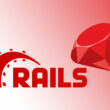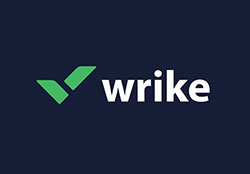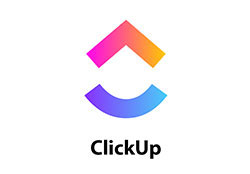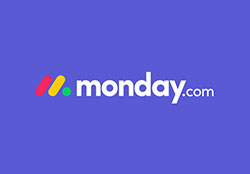Imagine this. You’ve got a project deadline staring you down. The clock’s ticking louder by the minute, and the usual methods just won’t cut it.
Welcome to the world of fast tracking in project management, where we twist the throttle on our timeframes, getting teams to sprint through tasks with precision.
In this high-speed chase against the calendar, you’re not alone. Together, we’ll leapfrog phases, wielding schedule compression techniques like a maestro.
Need to overrun a milestone? We’ve got overlapping phases to merge timelines.
By the tail end of our adventure, you’ll be wielding tools that pack a wallop.
We’re not just zipping through a work breakdown structure efficiency marathon; we’re reshaping how projects breathe in the fast lane.
Prepare for a quick dive into agile tactics, nifty PRINCE2 protocols, and critical path wizardry that’ll leave your old project timeline in the dust. Buckle up—your crash course in mastering the art of accelerated project timelines starts now.
7 benefits of fast-tracking in project management
Fast-tracking helps you complete your projects faster. It achieves this in the following 7 ways:
Faster project delivery
Project managers who apply the fast-tracking approach are often pleasantly surprised. Namely, they finish the project way ahead of schedule.
As you keep delivering projects early, you’ll soon become one of the most prestigious project managers in your field. Before you know it, you’ll be swimming in job opportunities.
Increased profit
Fast-tracking allows your team to tackle multiple tasks at once. As a result, you’ll finish the project much sooner while maintaining the expected quality.
Once you learn to do this regularly, you’ll have more projects in a year than you used to. And the more you get done, the more money you make.
It can help you get your project back on track
Not all projects go smoothly. Sometimes, you’ll encounter many obstacles along the way. These will ultimately slow down your progress, pushing you behind schedule.
Luckily, fast-tracking can be a big help here. It is a very effective project compression technique that can help you get back on track. This is important because employers place timeliness above all else when looking for PMs.
Project correction
Projects fall behind schedule for several reasons. One of the most common ones is an overlooked error.
When this happens, your team will have to spend extra hours resolving the issue and getting back on schedule. A solid fast-tracking plan improves the work environment. As a result, your team will recover from mistakes faster.
Frees up some resources early
Early delivery means your resources can go into other projects. This ultimately enables you to finish more projects in a single year.
Consider two independent tasks. One takes eight weeks while the other one may take 5 weeks. Because they’re unrelated to each other, your team can tackle both at once. This saves you five weeks.
Improved cost-efficiency
Fast-tracking helps you utilize your assets and resources to their fullest. As a result, you require fewer people. Increasing your profits while lowering your expenses means you’ll earn more money.
Building prestige
When you deliver projects ahead of time regularly, you build a positive reputation. This can give you an edge in the industry your company focuses on. Good prestige means more clients. And more clients lead to more profit.
Are you looking for a great project management app?
Here are our recommendations:
6 drawbacks of fast-tracking in project management
Just like any PM technique, fast-tracking also has its shortcomings. These 6 drawbacks can make you think twice about using this technique:
Fast-tracking in project management can be mentally taxing
Fast-tracking is all about moving quickly. But this increased pressure can take its toll on your team. When your employees deal with more tasks at once, they need to work twice as hard.
If you set the activity bar too high, your employees will feel stressed. As a result, their productivity will worsen and so will the project quality.
You need to identify the critical path
Project fast-tracking relies on identifying the critical path. You shouldn’t use this method if you don’t know how to do this.
Choosing the wrong approach can lead to a waste of effort. Critical paths often change as the project develops, which can make fast-tracking a risky approach.
Difficult To Implement Effectively
Of all project management techniques, fast-tracking is easily the hardest one to execute. You must meet countless requirements before creating a stable fast-tracking schedule.
Monitor the critical path closely
Since the critical path can change easily, you’ll have to monitor it closely. Some critical path activities may cease being critical at one point.
This makes working on it a waste of time and resources. To prevent this, you must constantly monitor the critical path. Keep in mind that this will take a lot of your time and energy.
High risk of low-quality work
Some studies show that humans weren’t made to multitask effectively. Multitasking may even lower the overall quality of work. Thus, fast-tracking requires a team with formidable multitasking skills. If the employees don’t possess such skills, their overall work quality will suffer.
It may lead to unexpected expenses
All of the above may lead to unexpected setbacks. These may be caused by anything from employee burnout to unfixable errors made along the way. Sadly, these setbacks often translate into additional expenses.
Our guide to efficient fast tracking in project management
Fast-tracking is one of the trickiest PM techniques to execute. Here are the 6 principles of successful fast-tracking:
Determine if fast-tracking is the right approach for your project
While fast-tracking helps you finish a project sooner, it isn’t always worth the cost. The extra stress and risks involved should make you think twice before you commit to it.
The following questions can help you make an educated decision:
- How far behind schedule are you?
- What are the critical path activities, and can you fast-track them?
- What are the task dependencies?
- How will the rigorous schedule affect your employees, resources, and organization as a whole?
Identify what went wrong with your schedule
Examine the project requirements, goals, objectives, priorities, and milestones closely. Try to identify what went wrong and caused you to fall behind schedule.
Then, determine if fast-track can help you make up for the lost time. Sometimes, it may make you fall even further behind.
Project management software such as Planyway Timeline can help you better visualize your project. Thus, it can help you determine if fast-tracking is the right option for you.
The following questions can help you in your decision:
- How much time do you need to get back on track?
- What are the critical path tasks?
- Which tasks depend on one another?
- How will these changes affect your employees’ workload?
Only move to the next step once you’re absolutely sure fast-tracking will help you.
Build a plan
Fast-tracking is a very intense process. Before you commence multitasking, you must establish a solid plan.
Project management software can help you while you build one. Cloud-based tools allow your entire team to access project progress and receive task updates. Better communication means better performance.
Monitor your resources closely
Your project schedule must be solid. Each employee’s workload must be manageable to prevent burnout. You can achieve this by using a team timeline tool.
With this tool, you can reschedule tasks immediately to balance out the workload across the team.
Monitor the project
Multitasking is a very chaotic process. To prevent errors, you’ll have to constantly watch over the project. Using project management software can make your job much easier.
You should also update the schedule regularly. Don’t forget to check on your employees from time to time too.
Communicate with your team
Communication is the key to preventing possible problems. Check on your employees regularly. Make sure they understand what they need to do and have everything to carry out their job successfully.
Consider using Planyway. This software improves your collaboration with employees. It comes with several useful features such as comments, notifications, and file sharing. Many PMs use project management software to make their jobs easier and more efficient.
FAQ On Fast Tracking In Project Management
What exactly is fast tracking in project management?
Fast tracking? It’s like putting your project on double espresso. You’re doing tasks simultaneously that were planned in sequence. Risky, yes, but it can shave precious time off your end date when you’ve got no wiggle room left.
Can every project be fast-tracked?
Straight talk? Not all projects can handle the heat of fast tracking. Needs a sturdy foundation—clear-cut tasks that can overlap without causing a domino effect of delays. It’s about smart choices, not just speed.
What are the risks associated with fast tracking?
When you fast track, imagine juggling with extra balls. More stuff can drop. Risks escalate—think quality issues, team burnout, or coordination mishaps. It’s the trade-off for pushing your deadlines to the brink.
How do I identify parts of my project suitable for fast tracking?
Look for tasks with a bit of give, where dependencies flex like elastic. Start with your project schedule, eye those non-critical paths, and zero in on phases where you can parallel process. It’s about finding the slipstream.
Does fast tracking affect project costs?
You bet. Fast tracking could either save you a penny or cost you a pound. Shorter timelines might mean less overhead, but any blunders from the rush could wrack up extra dough for fixes. Balance is key.
How can I minimize the risks when fast tracking a project?
Risk control—like a steady hand on the wheel. Tighten up communication, keep your team in sync, and double down on contingency planning. It’s about having a Plan B, even a Plan C, ready to roll out.
What’s the difference between fast tracking and crashing a project?
Here’s the skinny—fast tracking squeezes tasks to run side-by-side. Crashing? That’s all about throwing extra resources at critical tasks to speed ’em up. Two different gears, same race against time.
Should I consult my project team before deciding to fast track?
Absolutely. Rally the troops! They’re the ones in the trenches and their insights are gold. Without their buy-in, you’re leading a charge with no army.
How does fast tracking impact project stakeholders?
Imagine you invited everyone to a movie and then pressed fast forward. Stakeholders might miss the details if things move too quick. It’s crucial you keep them clued in, adjusting expectations like a pro.
What tools can aid in fast tracking a project?
Your toolkit better be loaded—project management software like Microsoft Project, agile frameworks, and experience with PRINCE2 are your best pals. They keep the chaos in check while you’re fast and furious with the timelines.
Conclusion
With the pace dialed up and the timeline taut, we’ve spun through the loop of fast tracking in project management. High stakes, absolutely. But playing it safe won’t always race us to that finish line ribbon, now will it?
- Steering through accelerated timelines and overlapping phases.
- Skimming the surface of schedule compression techniques.
- Navigating the dicey waters of risk and stakeholder management.
The kit is scaled. The know-how? Amped up.
When the usual drag of project deadlines morphs into a sprint, remember—the essence isn’t just swiftness; it’s about smarter, faster, and more strategic workflow. We’re not hopping on the fast track cavalierly. It’s all eyes on the prize, hands steady, minds sharp.
Consider this a guide to zip through those projects with finesse, weighing risks like a pro scale-master, tapping into your team’s pulse, and choosing the right tools for the job from Microsoft Project to agile methodologies. That’s the wrap—it’s your play now.
- Ruby’s Realm: What is Ruby Used For? - April 25, 2024
- Preventing Emails From Going To Spam In Gmail with GlockApps - April 25, 2024
- Key Technologies Shaping UX/UI in Web Portal Development - April 25, 2024












